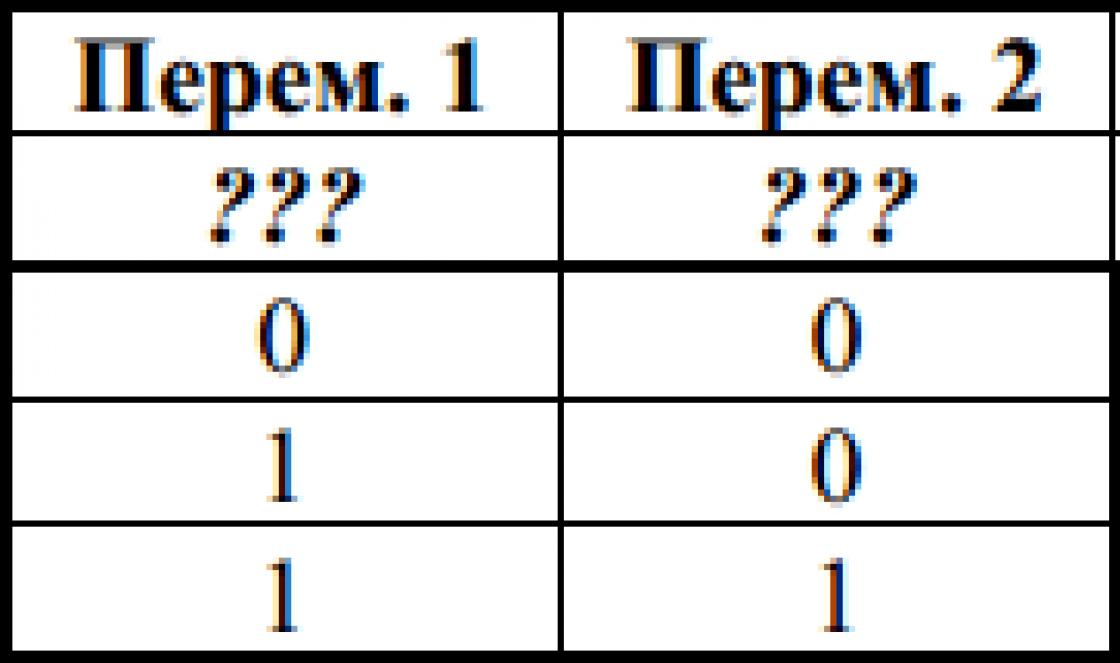The course provides fundamental practical knowledge of deep learning. Using various examples, the features of the work and training of deep neural networks will be analyzed, and various implementations of architectures, both convolutional and recurrent deep neural networks, will be discussed.
Generating C / C ++ code from MATLAB (MLEM) algorithms
The course provides practical skills for generating C code from MATLAB code. Explains how to prepare MATLAB code for code generation and how to perform optimal C code generation. The course shows an example of setting up interfaces and integrating the generated C code into an external project.
Integration of С / С ++ code into SIMULINK (SLEX)
The course covers various techniques for integrating code into Simulink models. The main focus is on the integration of C code and MATLAB code. Topics covered include C MEX S-Functions, MATLAB Code, and Connecting External C Functions with the Legacy Code Tool in Simulink.
Team Development Organization (SLMB)
The course provides practical skills in Model-Based Design as applied to team and corporate development. Provides guides for managing and collaborating with Simulink models when working on large-scale projects.
MATLAB for Aerospace Professionals (MLBE-O)
The hands-on course is designed for aerospace engineers to provide a comprehensive introduction to the MATLAB technical computing environment. Fundamentals of data analysis, visualization, modeling, and programming in MATLAB are the key topics of the course.
MATLAB for Automotive Professionals (MLBE-A)
The hands-on course is designed for automotive engineers to provide a comprehensive introduction to the MATLAB technical computing environment. Fundamentals of data analysis, visualization, modeling, and programming in MATLAB are the key topics of the course.
Systems and Algorithm Modeling (SLBE)
The course is designed for engineers who are new to system and algorithm modeling. The emphasis is on applying basic modeling techniques, model assembly validation, and tools for developing Simulink flowcharts.
Design of Digital Signal Processing Systems (SLBE-G)
The course is intended for those DSP professionals who do not have professional experience in Simulink®. Based on the use of basic methods and tools for building models, the skills of developing models in the form of block diagrams for building digital signal processing systems will be given.
Data processing and visualization in MATLAB (MLVI)
The course focuses on importing and preparing data for developing data analysis applications. The course will be useful for analysts and Data Scientists who need to automate the processing, analysis and visualization of heterogeneous data received from many sources.
Machine Learning with MATLAB (MLML)
The course focuses on data analysis and machine learning techniques in MATLAB. Unsupervised learning techniques for exploring and discovering features in large datasets and supervised learning to build predictive models are discussed. Examples and exercises will show you how to visualize and evaluate results.
Deep Learning in MATLAB (MLDL)
The course provides fundamental practical knowledge of deep learning. Using various examples, the features of the work and training of deep neural networks are analyzed, and various implementations of architectures, both convolutional and recurrent deep neural networks, are discussed.
Preprocessing and Extracting Signal Properties with MATLAB (MLSP)
This one-day course will show you how to use MATLAB, Signal Processing Toolbox, and Wavelet Toolbox tools to process time signals and extract key characteristics in the time and frequency domain. This course is intended for data scientists and signal (time series) analysis engineers.
MATLAB Programming (MLPR)
Hands-on experience in using the features of MATLAB to write efficient, well-structured and readable code. These concepts form the basis for building applications, developing algorithms, and expanding the capabilities of products being developed. The course covers the details of optimizing code performance, as well as tools for writing and debugging code.
Integration of C / C ++ code into MATLAB (MLEX)
The course focuses on the interaction of MATLAB and custom C code. On practical examples and exercises, the generation of MEX files for integrating external C code into MATLAB applications and calling MATLAB code from applications written in C are considered.
Object Oriented Programming in MATLAB (MLCO)
Course participants will learn how to use object-oriented programming to develop and maintain complex applications. In addition, a test-driven development approach for software quality assurance will be presented.
Acceleration and parallelization of MATLAB code (MLAC)
The course will introduce various techniques for speeding up MATLAB code. You will learn how to find and fix bottlenecks in your code using techniques for allocating memory and vectorizing computations, compiling programs in MEX, and running code on multi-core CPUs and GPUs.
Writing GUIs with MATLAB (MLAP)
The course provides skills for creating interactive user interfaces for programs in MATLAB. You will learn how to use custom controls such as buttons, sliders, graphics, and menus to create a reliable and user-friendly interface for your MATLAB application.
Financial Analysis in MATLAB (MLFA)
The course is intended for professionals in the field of computational finance. It provides a comprehensive introduction to the MATLAB technical computing environment. Topics of data analysis, visualization, modeling and programming are covered throughout the course with an emphasis on practical applications for financial applications in tasks such as time series analysis, Monte Carlo modeling, analysis and portfolio management.
Credit Risk Management in MATLAB (MLCR)
The course provides a comprehensive introduction to credit risk modeling using MATLAB and computational finance tools. Useful for risk practitioners with MATLAB experience developing credit risk models using common methods modeling and approach based on extended internal Basel II / III ratings.
Time Series Modeling in MATLAB (MLTS)
The course provides a comprehensive understanding of time series modeling using MATLAB. The training is intended for economists, analysts and financial professionals with MATLAB experience developing time series models. The course is based on the standard Box-Jenkins procedure for developing time series models.
Market Risk Management in MATLAB (MLMR)
The course provides fundamental skills in market risk management using MATLAB and financial instruments. The course is intended for risk analysts, risk managers, portfolio managers, and other financial professionals with MATLAB experience who need to analyze, evaluate and manage market risks. The course uses examples of market risks, although the techniques demonstrated are applicable in most areas of risk, including liquidity, interest rate and operational risk.
Systems and Algorithm Modeling (SLBE)
The course is designed for engineers who are new to system and algorithm modeling. The emphasis is on applying basic modeling techniques, model assembly validation, and tools for developing Simulink flowcharts.
Modeling Systems and Algorithms for the Automotive Industry (SLBE-A)
The course is intended for automotive engineers who are new to system and algorithm modeling. The emphasis is on applying basic modeling techniques, model assembly validation, and tools for developing Simulink flowcharts.
Aerospace Modeling Systems and Algorithms (SLBE-O)
The course is designed for aerospace engineers who are new to system and algorithm modeling. The emphasis is on applying basic modeling techniques, model assembly validation, and tools for developing Simulink flowcharts.
Development of state machines and control logic (SLSF)
During of this course explores the use of Stateflow to model control logic and state machines. The course is designed for Simulink users who are involved in modeling event and high-level control systems. The course focuses on the use of state machines and truth tables when developing in Simulink.
Modeling queues and discrete event systems (SLSE)
A hands-on course is devoted to discrete event modeling using the SimEvents tool. The modeling of processes in systems that depend not on time, but on the occurrence of one or another event is considered. Examples of such systems include: manufacturing process, supply chain, communication channel, processor or software product architecture.
Powertrain Modeling and Calibration (SLMC)
The course focuses on tools and techniques for experiment planning, statistical modeling, and optimization techniques for calibrating modern powertrains in MATLAB and Simulink. The course is designed for engineers who are involved in calibration, testing, ECM control algorithms, and powertrain mathematical modeling.
Development of robotic systems with ROS and GAZEBO in MATLAB (MLRO)
The training is intended for engineers developing motion algorithms for mobile robots based on the Robot Operating System (ROS) and the Gazebo simulator.
Semi-Natural Modeling (SLRP)
The practical course is devoted to testing and debugging control algorithms in hard real time. The work with real-time machines is considered, as well as the capabilities of the Simulink Test tool designed for formal testing of algorithms.
Development and prototyping of communication systems with SDR USRP (SLZR)
In the course, you will learn how to dynamically simulate digital communication systems with one or more carriers in MATLAB®. As part of the course, we get acquainted with multi-antenna communication systems, turbo coding, models of imperfect distribution channels. Components of the LTE and IEEE 802.11 systems are used as examples. Trainees will build a radio-in-loop system using RTL-SDR or USRP® hardware platforms.
Designing the physical layer of communication systems of the LTE and LTE ADVANCED (MLTE) standards
The course is aimed at studying the basic principles of building the physical layer of communication systems of the LTE and LTE-Advanced standards. In this course, students will learn how to generate LTE reference signals as well as how to simulate the end-to-end transmission of a signal from a transmitter to a receiver through a communication channel.
Design of Digital Signal Processing Systems (SLBE-G)
The course is intended for those DSP professionals who do not have professional experience in Simulink®. Based on the use of basic methods and tools for building models, the skills of developing models in the form of block diagrams for building digital signal processing systems will be given.
RF Path Modeling (SLRF)
Learn to use RF Blockset and RF Toolbox to model RF circuits in wireless communication systems. You will learn how to choose between two different paradigms for modeling RF signals: Equivalent Baseband and Circuit Envelope, as well as learn the basic techniques for simulating and modeling RF signals.
Communications Systems Engineering (SLCM)
With practical examples, you will learn how to use Simulink products to design common communications systems. Special attention is paid to end-to-end design and modeling of communication systems from transmitter to receiver using Simulink.
Creation of software components for the AUTOSAR architecture (SLAS)
The course focuses on AUTOSAR-compliant modeling and code generation using the Simulink Code Generator Support Package for AUTOSAR. In the context of Model-Based Design, software development is considered by top-down and bottom-up methods. The course is intended for automotive software developers and systems engineers who use Embedded Coder to automatically generate C / C ++ code.
Automatic code generation for ZYNQ (SLZQ)
The hands-on course is aimed at learning the process of developing and configuring models in the Simulink environment and deploying them on the Xilinx® Zynq®-7000 platform. The course is designed for Simulink users who plan to generate, validate, and deploy C / C ++ code for embedded systems and HDL code using Embedded Coder and HDL Coder. The course uses the ZedBoard ™ debug board.
Static analysis of C / C ++ code for embedded systems (PSBF)
This course discusses the use of Polyspace Bug Finder to detect algorithmic defects, improve software quality metrics, and ensure the reliability of the final product. This hands-on course is intended for engineers who design software or models for embedded systems.
C / C ++ code verification with LDRA tools (LDRA)
The course aims to provide participants with a thorough understanding of advanced testing methodologies, as well as the requirements and constraints associated with developing applications to meet industry standards such as DO-178C and DO-278 in avionics, ISO 26262 in automotive, IEC 61508 in industrial safety, and IEC 62304 in medical devices.
Despite the fairly high popularity of the MATLAB language, most developers have difficulty understanding both its syntax and capabilities. The thing is that the language is directly related to a popular software product, the cost of which can reach incredible values. So, the main question is: is Matlab itself so good? And can it be useful just for you.
Using
Let's start not with a standard excursion into the history and discussion of the pros and cons of the language, but with the MATLAB / Simulink software environment - the only place where the hero of this text can be useful. Just imagine a graphic editor in which you can implement any of your ideas without having several years of experience and relevant education behind you. And having created a scheme of interaction of tools once, get a high-quality script for repeated use.
MATLAB is just such an editor in the data world. Its scope is infinitely wide: IoT, finance, medicine, space, automation, robotics, wireless systems and much, much more. In general, almost unlimited possibilities for collecting and visualizing data, as well as forecasting, but only if you can buy the corresponding package.
As for the price, there is almost no upper border, but the lower one is in the $ 99 region. To grab such a powerful product for relatively little money, you need to be a university student. And of course you get a rather limited product.
Language features
The MATLAB language is a tool that allows an operator (often not even a programmer) to interact with all the available analysis, data collection and presentation capabilities. It has obvious pros and cons inherent to a language living in a closed ecosystem.
Disadvantages:
A slow and overloaded language with operators, commands, functions, the main goal of which is to improve visual perception.
Narrowly directional. There is no other software platform where MATLAB is useful.
High cost of software. If you are not a student - either get ready to empty your pockets or cross the line of the law. And even if the student is a decent price.
Low demand. Despite the great interest in MATLAB in almost all areas, only a few use it in fact and legally.
Advantages:
The language is easy to learn and has a simple and straightforward syntax.
Huge opportunities. But this is rather an advantage of the whole product as a whole.
Frequent updates, as a rule, noticeable positive transformations occur at least a couple of times a year.
The software environment allows you to convert it into "fast" code in C, C ++.

The target audience
Of course, not everyone needs MATLAB. Despite the widest range of applications, it is difficult to imagine that an ordinary application developer might need to know this language. MATLAB is extremely useful in areas that require special reliability in data processing, for example, in autopilot systems in cars or on-board electronic systems of an aircraft.
That is, if you are not a very programmer, but one way or another your profession is associated with the need for programmatic data processing, then the MATLAB / Simulink product with the appropriate language can greatly simplify your everyday tasks.
Literature
We conclude the review of the language, as always, with a list of educational literature. Of course, among them you will not find books exclusively on the language, but this will only make the perception of language easier:
Do you have experience with MATLAB? And which?
For those who want to become a programmer -.
Hello dear visitors of our portal Video Teacher. We would like to provide you with video tutorials on the programming system in the MATLAB program.
MATLAB is a high-level language and interactive environment for programming, numerical calculations and visualization of results. With MATLAB, you can analyze data, develop algorithms, create models and applications.
The MATLAB system is offered by the developers (Math Works, Inc.) as a market leader, primarily in the military-industrial complex, aerospace and automotive industry, a high-level programming language for technical computing with a large number of standard software packages. The MATLAB system has incorporated not only the advanced experience in the development and computer implementation of numerical methods, accumulated over the past three decades, but also the entire experience of the formation of mathematics throughout the history of mankind. About a million legally registered users are already using this system. Leading universities and scientific centers of the world are willingly using it in their scientific projects. The popularity of the system is facilitated by its powerful Simulink extension, which provides convenient and simple tools, including visual object-oriented programming for simulating linear and nonlinear dynamic systems, as well as many other system extension packages.
The language, tooling, and built-in math functions allow you to explore different approaches and get a solution faster than using spreadsheets or traditional programming languages \u200b\u200bsuch as C / C ++ or Java.
MATLAB is widely used in areas such as:
- signal processing and communication,
- image and video processing,
- control systems,
- automation of testing and measurements,
- financial engineering,
- computational biology, etc.
Watch video tutorials that will teach you how to work with MATLAB. These educational video tutorials are ideal for beginners who want to master the basic skills of working with an application package that serves to solve various mathematical problems, technical calculations. Study effectively and interestingly with us! You can find more detailed information on MATLAB on the website
Course " Introduction to MatLab"provides information about the capabilities of MatLab. During the course, students will learn how to use the MaLab interpreter language to solve a wide range of problems.
Required level of training:
- knowledge of the basics of programming;
- skills in operating system Windows.
Course program
1. Introduction
- Scope of the MaLab system. Review of socialized MaLab tools.
2. MATLAB Desktop Tools
- Desktop 3.
- Main menu.
- Project Directory Browser (Current Folders).
- Command window (Command Windows).
- Command History window.
- Basic Workspace Browser.
- Editor (Editor).
3. Composition of the project directory
- M files.
- SLX files.
- FUR - files and utilities for working with them.
- MAT files.
4 . Graphing tool
5. MatLab system language
- General characteristics of the MatLab language.
- Variables and their types.
- Arrays.
- Ways of specifying an array.
- Constructing arrays from arrays.
- Subarrays.
- Operations on arrays.
- Structures.
- Basic control structures.
- M-Functions and Anonymous Functions.
- Classes.
- Class structure.
- Inheritance mechanism.
- Properties section.
- The methods section.
- Events section.
- Enumeration section.
- Value classes, handle classes.
- Events
- Graphical data display
- GUI Development Tools
- An eval string interpreter.
- Symbolic calculations.
At the end of the course, a final assessment is carried out in the form of a test or on the basis of marks for practical work performed in the learning process.
The MATLAB programming language is a high-level interpreted programming language that includes a wide range of functions, an integrated development environment based on matrix data structures, object-oriented capabilities written in other programming languages. MatLab package was created by Math Works over ten years ago. The work of hundreds of scientists and programmers is aimed at constantly expanding its capabilities and improving the underlying algorithms.
Today in our country more than 1000 enterprises use MATLAB tools to solve their problems. MATLAB is used in various fields of human activity: IoT, finance, medicine, space, automation, robotics, wireless systems, and more. etc. In a word, everything related to the ability to collect and visualize data, as well as forecasting.
Currently MATLAB is a powerful and versatile tool for solving problems, and specialists with MATLAB skills are in great demand in the labor market.
We invite you to take MATLAB courses at The educational center "Interface" to learn how to work effectively with MATLAB tools, quickly solve mathematical and economic problems.





